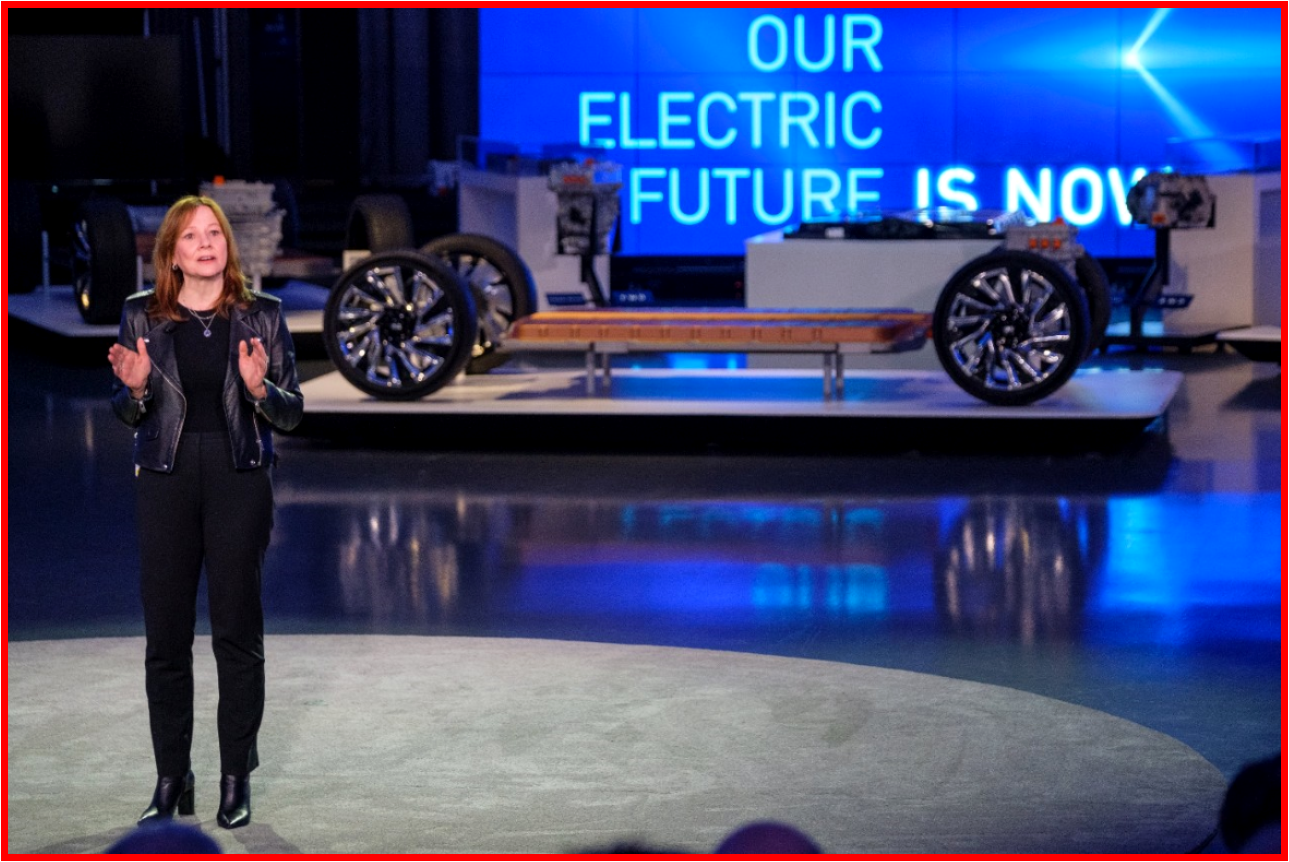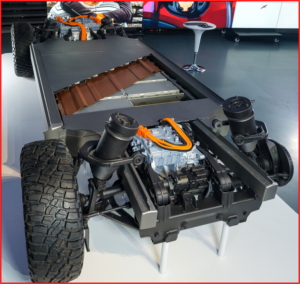
General Motors Chairman and CEO Mary Barra on Wednesday, March 4, 2020 detailing GM’s electric vehicle technologies and upcoming products in the Design Dome on the GM Tech Center campus in Warren, Michigan.
General Motors Co. (NYSE: GM) today revealed a third-generation global EV platform powered by proprietary “Ultium” batteries. GM claimed it will allow the company to compete for almost every customer in the market today, whether they are looking for affordable transportation, a luxury experience, work trucks or a high-performance machine. A space that is largely occupied by Tesla, which caught all global automakers napping.
“What we have done is build a multi-brand, multi-segment EV strategy with economies of scale that rival our full-size truck business with much less complexity and even more flexibility,” said Mary Barra, GM chairman and CEO. Stockholders are in essence seeing management place a $20 billion wager that EVs will be accepted by customers as never before, and that GM can sell to them profitably.
Chevrolet, Cadillac, GMC and Buick will be launching new EVs starting this year. The next new Chevrolet EV will be a new version of the Bolt EV, launching in late 2020, followed by the 2022 Bolt EUV, launching Summer 2021. The Bolt EUV will be the first vehicle outside of the Cadillac brand to feature Super Cruise, the industry’s first true hands-free driving technology for the highway, which GM will expand to 22 vehicles by 2023, including 10 by next year.
The Cruise Origin, a self-driving, electric shared vehicle, shown to the public in January 2020 in San Francisco, was the first product shown using GM’s third generation EV platform and – marketing babble alert – Ultium batteries. Next will be the Cadillac Lyriq luxury SUV in April. The reveal of the Ultium-powered GMC HUMMER EV will follow on May 20. Production is expected to begin in Fall 2021 at GM’s Detroit-Hamtramck assembly plant, GM’s first assembly plant 100% dedicated to EV production.
GM says its new Ultium batteries are unique in the industry because the large-format, pouch-style cells can be stacked vertically or horizontally inside the battery pack. This allows engineers to optimize battery energy storage and layout for each vehicle design.
Ultium energy options range from 50 to 200 kWh, which could enable a GM-estimated range up to 400 miles or more on a full charge with 0 to 60 mph acceleration as low as 3 seconds. Designed in-house, the new platform will support front-wheel drive, rear-wheel drive, all-wheel drive and performance all-wheel drive models.
Ultium-powered EVs are designed for Level 2 and DC fast charging. Most will have 400-volt battery packs and up to 200 kW fast-charging capability while the truck platform will have 800-volt battery packs and 350 kW fast-charging capability.
Barra said GM’s flexible, modular approach to EV development will result in significant economies of scale and create new revenue opportunities, including:
- Continuous Improvement in Battery Costs: GM’s joint venture with LG Chem will cut battery cell costs below $100/kWh. The cells use a proprietary low cobalt chemistry and ongoing technological and manufacturing breakthroughs will drive costs even lower.
- Flexibility: GM’s all-new global platform is flexible enough to build a wide range of trucks, SUVs, crossovers, cars and commercial vehicles with outstanding design, performance, packaging, range and affordability.
- Capital Efficiency: GM can spend less capital to scale its EV business because it is able to leverage existing property, including land, buildings, tools and production equipment such as body shops and paint shops.
- Complexity Reduction: The vehicle and propulsion systems were designed together to minimize complexity and part counts beyond today’s EVs, which are less complex than conventional vehicles powered by internal combustion engines. GM plans 19 different battery and drive unit configurations initially, compared with 550 internal combustion powertrain combinations available today.
- Rising Customer Acceptance: Third-party forecasters expect U.S. EV volumes to more than double from 2025 to 2030 to about 3 million units on average. GM believes volumes could be materially higher as more EVs are launched in popular segments, charging networks grow and the total cost of ownership to consumers continues to fall.
- New Sources of Revenue: By vertically integrating the manufacture of battery cells, the company can reach beyond its own fleet and license technology to others.




Pingback: GM and EVgo to Add EV Fast Chargers Nationwide | AutoInformed
Pingback: GM and Honda to Jointly Develop Honda Electric Vehicles | AutoInformed